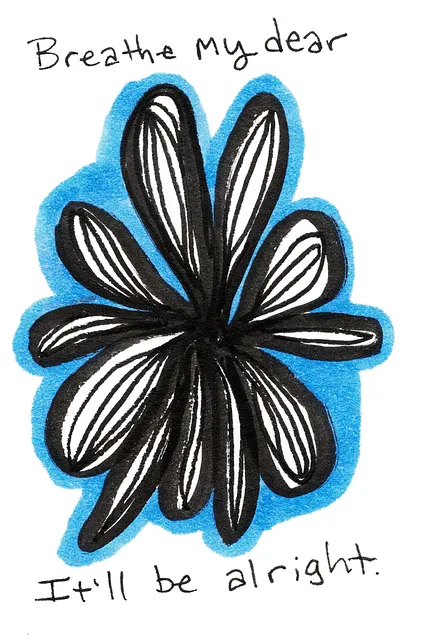Understanding your target audience is crucial for marketing a mental wellness app like those offering Lone Tree Kaiser Permanente mental health appointment numbers. By segmenting users into groups with specific needs (e.g., young adults, working professionals, depression prevention), developers can create personalized content and features like mindfulness exercises and community forums. Incorporating evidence-based strategies enhances app credibility while appealing to users actively seeking mental health solutions, resonating with diverse demographics and addressing unique challenges across age groups, genders, and cultural backgrounds.
“In today’s digital landscape, mental wellness apps play a pivotal role in addressing diverse psychological needs. To thrive in this competitive market, developers must craft strategic marketing campaigns that resonate with their target audience. This article guides you through an effective strategy development process for your mental wellness app, focusing on understanding unique user demographics and psychographics.
We’ll explore how to leverage distinctive features, such as those offered by Lone Tree Kaiser Permanente’s services, and create tailored content. Additionally, we delve into a multi-channel marketing approach, including digital strategies and partnerships, to attract and retain users, ensuring your app stands out from the crowd, even in comparison to established providers like Lone Tree Kaiser Permanente.”
- Understanding Your Target Audience
- – Identify demographics and psychographics of the target market for mental health apps.
- – Research common mental health challenges faced by different age groups, genders, and cultures.
Understanding Your Target Audience

Understanding your target audience is a cornerstone of any successful marketing strategy, especially within the mental wellness space. Apps focused on emotional well-being and mental health, like those offering Lone Tree Kaiser Permanente mental health appointment numbers, must tailor their approach to resonate with specific user needs. Whether it’s young adults struggling with stress and anxiety, working professionals seeking conflict resolution techniques for better workplace relationships, or individuals looking to prevent depression and manage mood swings, recognizing these diverse demographics is crucial.
By understanding the unique challenges and preferences of each audience segment, developers can create targeted content, design intuitive user interfaces, and offer personalized features like mindfulness exercises, meditation guides, emotional regulation tools, or even community forums for support. Incorporating evidence-based strategies for depression prevention and conflict resolution techniques can enhance app credibility while appealing to users actively seeking solutions for their mental health concerns.
– Identify demographics and psychographics of the target market for mental health apps.

Understanding your target audience is a cornerstone when developing marketing strategies for mental wellness apps. The ideal users for such applications span various demographics and psychographics. On one hand, young adults aged 18-35 are increasingly embracing digital solutions for their mental health needs, driven by factors like convenience and privacy. This demographic often seeks tools that enhance self-awareness exercises and promote mindfulness practices.
On the other hand, professionals with demanding careers or individuals dealing with chronic stress may prefer apps offering structured programs, such as mental wellness coaching and social skills training, to help them manage anxiety and improve overall well-being. Targeting specific groups like students, working parents, or individuals recovering from trauma can be effective, ensuring that marketing efforts resonate with the unique challenges and aspirations of each segment. Incorporating keywords like ‘Lone Tree Kaiser Permanente mental health appointment number’ could also be beneficial, especially when tapping into local communities where such services are in demand.
– Research common mental health challenges faced by different age groups, genders, and cultures.

Understanding the unique mental health challenges faced by diverse populations is a cornerstone of any effective marketing strategy for a mental wellness app. Research shows that while common issues like stress and anxiety transcend cultural boundaries, their manifestations and triggers differ significantly across age groups and genders. For instance, young adults might struggle with social pressures and identity formation, while older adults could face loneliness and grief. Women often experience unique challenges related to reproductive health and gender roles, while men may grapple with societal expectations of stoicism.
Cultural factors also play a substantial role in mental health. Different communities may have distinct beliefs about causes of distress and appropriate coping mechanisms. Some cultures prioritize collective support systems, whereas others emphasize individual resilience. Tailoring app features and messaging to acknowledge these variations can significantly enhance user engagement and appeal. For instance, an app focusing on self-esteem improvement might offer culturally sensitive content, ensuring it resonates with a broad audience, from urban millennials to rural elders, all under the trusted umbrella of Lone Tree Kaiser Permanente mental health appointment number resources.
In developing a marketing strategy for mental wellness apps, understanding your target audience is key. By identifying demographics and psychographics, such as those who might be searching for Lone Tree Kaiser Permanente mental health appointment alternatives, you can tailor messaging effectively. Recognizing the unique mental health challenges faced by various groups allows for more personalized outreach. This approach ensures that marketing efforts resonate with users, making it easier to connect them with the support they need, whether it’s through apps or traditional services like those offered by Lone Tree Kaiser Permanente.






